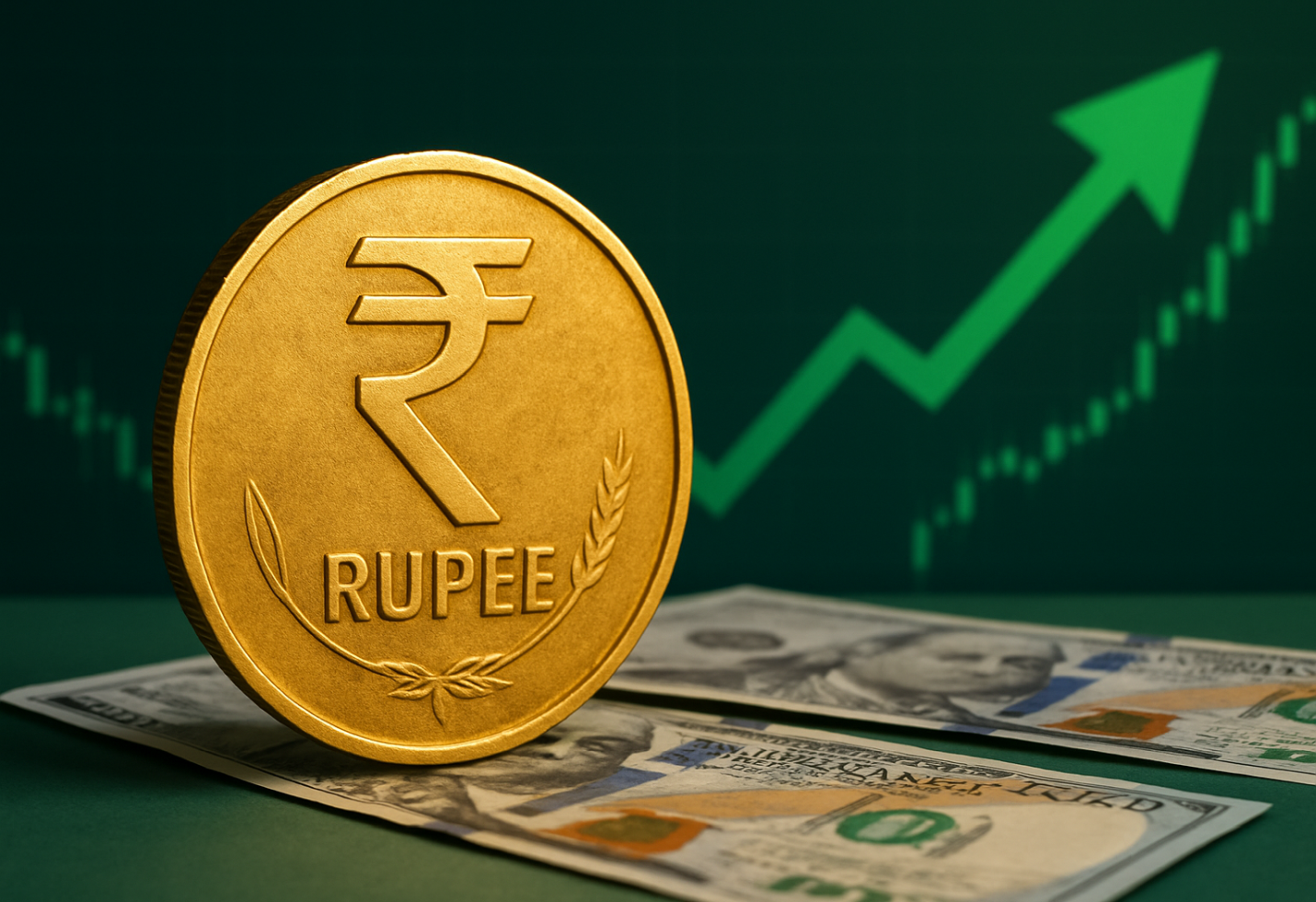Rupee Surge and the RBI Hold: What It Means for Indian Investors
On October 1, 2025 the Reserve Bank of India’s Monetary Policy Committee kept the policy repo rate unchanged at 5.50% and retained a neutral stance, while revising its real GDP forecast for fiscal 2025–26 upwards to 6.8% and trimming inflation projections. The decision was framed as a “dovish pause” that balanced upside growth revisions against still-benign inflation signals. The same day, the Indian rupee delivered its strongest simple daily gain in two weeks, closing around ₹88.69 per USD, as the U.S. dollar weakened amid geopolitical and US-political uncertainty. Indian equity indices also responded positively, with the BSE Sensex and Nifty 50 up roughly 0.9% on the day.
Why the RBI hold matters for markets
A central bank decision to pause (rather than hike) does more than freeze borrowing costs — it signals the path of future policy and affects risk appetite. By holding at 5.50% while revising growth upwards, the RBI has telegraphed that inflation is under enough control to allow a lenient stance if growth needs support. For investors this means:
* Equities: A neutral stance plus stronger growth forecasts typically supports higher earnings expectations for cyclical sectors (private consumption, banking, capital goods). The immediate market reaction — a near 1% rise in headline indices — reflects this linkage.
* Fixed income: Hints of future easing can pressure bond yields lower over time, but in the short run yields rose: India’s 10-year G-sec yield moved to the mid 6.5% area (around 6.52–6.59% on Oct 1), reflecting recent supply and global yield dynamics. That rise suggests spillovers from global rates and near-term liquidity rather than domestic policy surprise alone.
* FX: The rupee’s modest bounce was aided more by a softer U.S. dollar and potential RBI intervention than by a structural reversal. The central bank’s willingness to stabilise FX via state-bank dollar sales (if necessary) remains important given India’s open-economy exposures.
The rupee move — temporary reprieve or trend change?
The rupee’s ₹88.69 close on October 1 marked a technical recovery after a run of losses, but several factors argue caution before calling a structural reversal. First, India’s trade balance and dollar demand from importers and oil bills remain material; second, global dollar strength and yields set the backdrop for capital flows. ANZ and other banks flagged that a gradual depreciation remains a reasonable baseline absent large positive external shocks. Therefore, investors should treat the October 1 rally as a stabilising move, not definitive appreciation.
Sector and portfolio implications — practical takeaways
* Banks and financials: A neutral RBI stance plus growth upgrades typically favour loan growth and credit demand. Banking stocks often lead short-term rallies, but watch net interest margin (NIM) sensitivity to future rate cuts. If the RBI moves to ease later, NIM compression is a medium-term risk; however, higher loan volumes may offset some margin pressure.
* Exporters & IT services: Exporters benefit from a stable or weaker rupee. A sharper rupee depreciation supports reported rupee revenue for US-dollar earners; conversely, a strengthening rupee can compress margins. Given the RBI’s interventions and global dollar drivers, exporters should hedge near-term FX exposures selectively.
* Defensive consumer and domestic plays: Stronger growth forecasts support consumption themes—FMCG, retail and autos—but margin pressure from input inflation remains the watchpoint.
* Fixed income investors: With 10-year yields near 6.5–6.6%, investors must weigh duration risk versus yield pick-up. Shorter-dated government papers and dynamic bond funds offer ways to capture yields if the market expects eventual easing. Institutional investors should watch primary G-Sec supply calendars and CCIL indicative yields for yield curve shifts.
Risks and what to monitor next
Investors should track: RBI forward guidance — any explicit timing for cuts; inflation prints month-by-month to confirm the 2.6%/lower inflation trajectory the RBI signalled; external flows (FPI flows) and the US dollar index (which was ~97.6 on Oct 1) because global liquidity will dominate FX moves; and 10-year G-sec yields which set borrowing cost expectations for corporates. Market participants should prepare for volatility around US macro and political developments that have outsized short-term FX and rate implications.
Conclusion
The RBI’s October 1, 2025 hold with an upward GDP tweak provides a constructive backdrop for growth-oriented allocations in India, but the rupee’s bounce looks tactical rather than decisive. Prudent investors should overweight cyclicals and credit plays that benefit from growth if valuations permit; hedge significant FX exposure in export/import business models; and manage duration in fixed income, balancing attractive mid-6% yields against potential policy and supply shocks. The central bank bought markets a moment of clarity; the coming weeks of data and global sentiment will determine whether that clarity becomes a durable trend.
The image added is for representation purposes only





